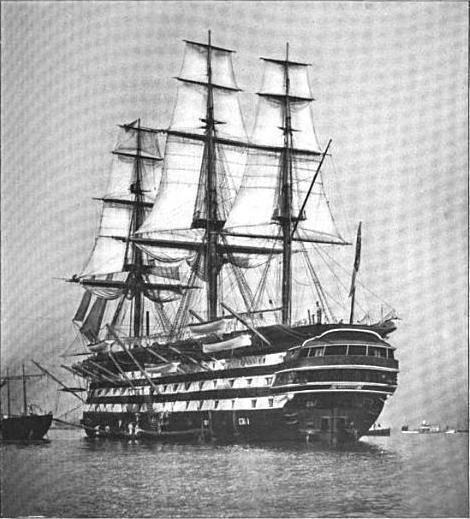Name HMS St Vincent Laid down May 1810 Tons burthen 2601 bm Launched 11 March 1815 | Ordered 15 January 1806 Fate Sold, 1906 Construction started May 1810 Builder Plymouth-Dock Dockyard | |
 | ||
Class and type | ||
HMS St Vincent was a 120-gun first rate ship of the line of the Royal Navy, laid down in 1810 at Devonport Dockyard and launched on 11 March 1815 before a crowd that was put at 50,000 spectators.
Contents
Service
She was one of class of three, and the only one to see active service, though she was not put into commission until 1829, when she became the flagship of William Carnegie, 7th Earl of Northesk, under Northesk's flag captain, Edward Hawker, at Devonport (aka Plymouth-Dock) Dockyard. After paying-off in April 1830 she was recommissioned the following month and was made flagship at Portsmouth Dockyard. From 1831 until 1834 she served in the Mediterranean. Placed on harbour service at Portsmouth in 1841, she joined the Experimental Squadron in 1846. From May 1847 until April 1849 she was the flagship of Rear-Admiral Sir Charles Napier, commanding the Channel Fleet.
After a spell in ordinary at Portsmouth, from July to September 1854, during the Crimean War, she was used to transport French troops to the Baltic. Subsequently she became a depot ship at Portsmouth. She was commissioned as a training ship in 1862, and specifically as a training ship for boys, moored permanently at Haslar from 1870. In this role she retained 26 guns. She continued as a training ship until 1905. Commander B. J. D. Yelverton was appointed in command in January 1902.
Fate
St Vincent was sold out of the service in 1906 for breaking up.
